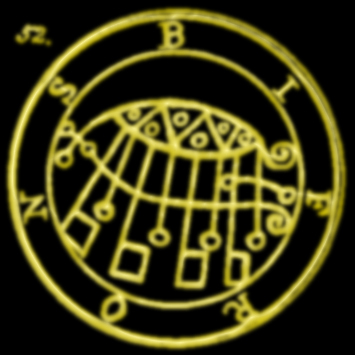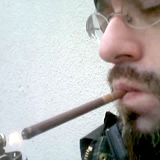This one time I was at a university in Italy, in a room that was called — and I’m translating here, but only barely — the Visualization Lab. In Italian it sounded like it could be the name of a famous opera, but my grasp of Italian is purely through a minor dalliance with Latin and everything in Italian sounds like it could be the name of an opera. “The dented door.” “The McDonald’s on the corner.” “My hairy left elbow.” “Visualization” has three Zs in it in Italian. It’s overdone. Uncalled for. We couldn’t get away with that in the US.
The interior of the lab was sick with the same illness. There were metal workbenches with large-screened computers assembled on them, and that was okay, but there was also a huge leather sofa and a couple of overstuffed armchairs facing an enormous flatscreen display — an in-house theater system with seven speakers and full surround-sound setup.
What I thought about all this must have been visible on my face. The woman I was here to see rolled her eyes at it and said, “This is all Thomas Dolby’s fault.”
I cleared my throat. “I understand he developed a –“
She cut me off. “No. I mean personally. He came by, wanting a favor. Signal processing for something he went on to patent. Then he came back and did this. This sofa I think was in someplace he lived.” She took a seat on it, claiming a corner. “Probably he and his astrophysicist girlfriend enjoyed it themselves a number of times.” She patted a spot on it nearby. “Here is where I do some of my best work.”
I gave her my best “I’m on to you” look. “You’re unbelievable.” But I took a seat in easy arm’s reach. She liked to grab nearby arms for emphasis sometimes, and if you sat too far away she just looked lost and petulant.
In a corner of the room another woman’s voice piped up. “Si dovrebbe crederle.” I thought she had been asleep, but she was just facing a blank wall wearing 3D goggles and headphones.
“See? Gi says you should believe me.” She laughed and pulled a keyboard and trackball off a coffee table. The giant screen turned on briefly with some sort of pulsing disco lightshow patterns and then quickly turned into a computer display. I saw a cursor briefly and some menus popped up and an opening screen for some sort of application opening up, then more choices to open an environment of mathematical equations and constraints. My collaborator gave me a running under-the-breath commentary to help me keep up.
“I’m turning off much of the rendering because we’d like to see the results today, while we wait, even. So. Boring white space, smudgy black lines for the graphs. And so. This is the path of our phenomenon’s centroid. A portion of it.” She turned to look at me. “Before I continue, I should ask you: Are you a big fan of causality?”
Her face said she was serious. Over in the corner, in plain view, Gi turned up the volume to whatever it was she was listening to and slouched back in her chair. I couldn’t tell whether it was some sort of commentary on our conversation or just an attempt to drown us out for her own purposes.
“I have a strong preference for the concept of causal associations, but I am, after all, a scientist. Show me a rigorous convincing argument for a different model and I’ll consider it.”
“I can never tell when you’re joking,” she said. “So I assume either you’re joking all the time or you never ever joke, or somehow manage to do both at once. A superposition of eigenstates that never resolves.”
I shrugged. “It’s a knack. I like to keep my options open, so that if I offend someone, I can always claim that I’d been joking afterward.”
“For someone who likes causality, you like to keep your fingers in the past so you can change it to give you a more pleasant present and future. But here is my actual point.”
The black arc went away and was replaced by some sort of three-dimensional spiky thing. I was kind of reminded of the crown shape you get when you take high-speed pictures of a drop of water splashing into a pool of more water, only it was spherical.
“The software takes the data and plots it, and then analyzes the fit with respect to all kinds of different curves. You can make suggestions and it can use those as a starting point, or you can let it run wild. Part of the charm of how it works is to separate the noise of the points into several interacting equations. Signal processing. Fourier analysis. It has equations it already knows about from its previous uses — the path of Earth through the heavens, including revolution and rotation and neutation and wobbles induced by other gravity sources, continually corrected. Twice we have had earthquakes in the past two years that have changed the length of Earth’s daily rotation, which, if we had allowed the software to flex enough, it could have predicted for us.
“This beautiful shape,” she continued, “only appears as a simultaneous plot holding the surface of the Earth fixed over, to be complete, a period of more than a thousand years. Much of the detail appears within a five year period, at least half of which is covered by the date collected from the noise from your apparati, but there are holes in the data that strongly suggest extrapolation in this manner.”
“Umm, that’s a huge amount of extrapolation from the data we’ve collected,” I cautioned.
“Not as much as you might think,” she countered. “We’ve assumed a kind of symmetry, which doubles the data, yes, but the actual addition is less than five percent.”
She did some more tapping to bring up a different model, which she animated. “Here we have a sphere of liquid, or something liquid-like, I should say, being impacted by a much smaller sphere of the same traveling at high speed. Note the entry and exit. And how it responds prior to impact as the incoming mass approaches and how afterward it just looks like ripples. It is perfectly symmetrical with respect to time. This is an idealized case of our model.”
“What is it?” I asked.
“When we got the match, I had to look it up and make some phonecalls. To Switzerland, and to Chicago. It is a splash of bosonic matter, previously entangled. One of the proposed models for a macroscopic mass of strange matter, the up-down-strange quark liquid. No baryons, no fermions.”
I looked at her. She shrugged.
“The non-idealized version. Your extrapolation. The distortions are…?” I asked.
She grabbed hold of my forearm with both of her smaller hands. “The mass of the sun. The mass of the earth. Gravitational attraction. Assuming a temporal view, the incoming arc is what we’ve been following. The departing arc or splash, or whatever…. That heads straight for the sun.”
“What’s the point of symmetry? When?” I asked.
She gave my arm a squeeze. “Twenty-two hours, thirty-eight minutes. Give or take about fifteen minutes.”
[*]






